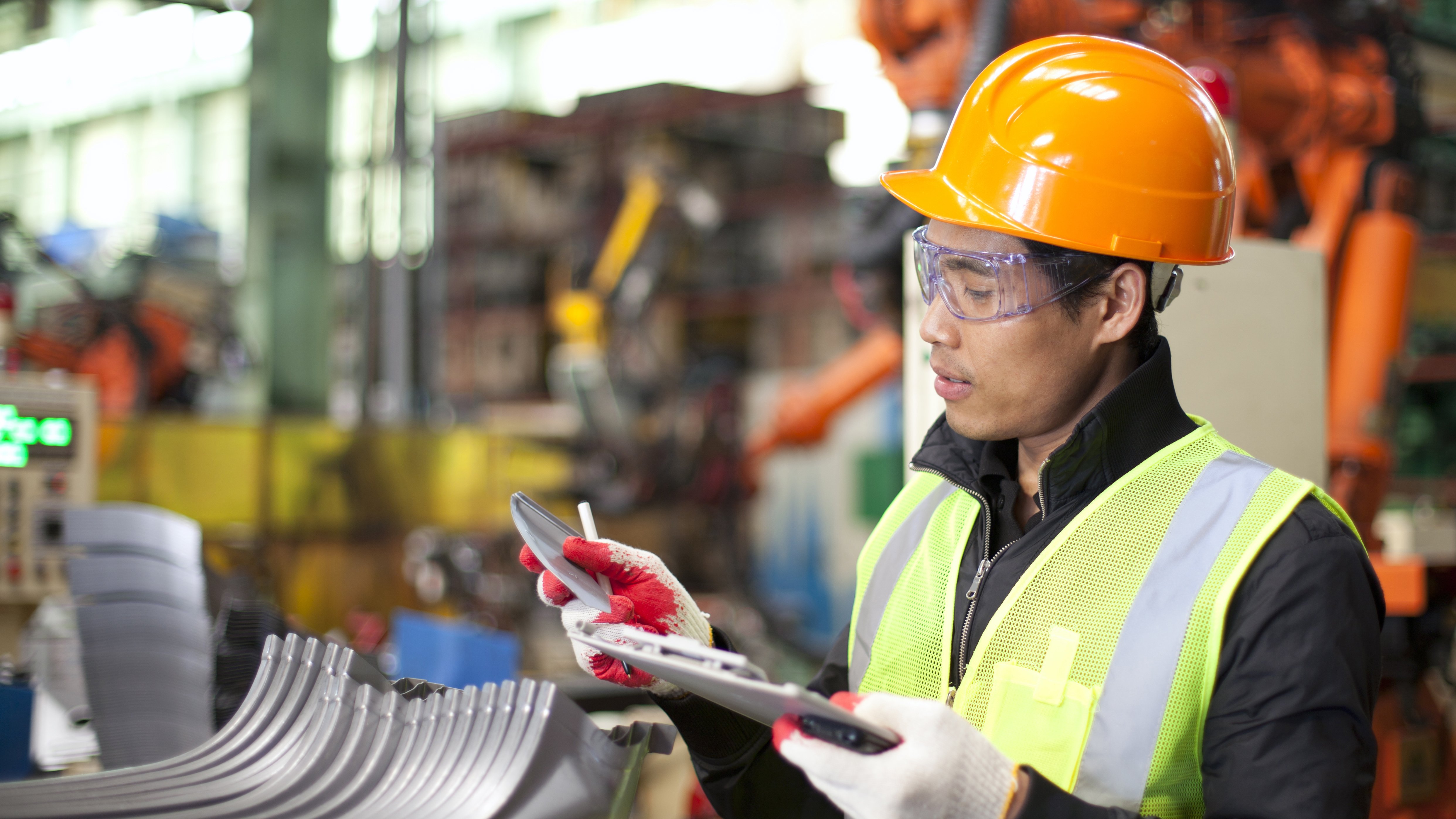Check out the example safety dashboard to the left. Here you can see the number of injuries and days out of work for each month of the year in an easy-to-read bar graph, in addition to other relevant injury metrics.
Collecting safety data and presenting it in a convenient dashboard is helpful to managers and safety officers because it’s an easy method to organize and create meaning out of what’s happening in the facility. The data is presented in real time and can help managers set KPIs for the plant, which are then used to make a game plan for reducing lost time from safety events like injuries.
Safety information also enables managers to set goals for future years. As injury data is compiled, managers compare year-over-year injury statistics to determine if they are meeting safety goals. Proactive goal setting positions safety as a priority for the benefit of employees, productivity and overall plant operations, because it creates a benchmark to improve upon.
Safety Dashboards Help Boost Productivity
Safety analytics can be tied directly to downtime, which is why visibility into safety performance is a strong indicator of productivity. Examples of useful safety analytics include safety scores, number of days between injuries, year-to-date injuries and lost time.
If a safety score decreases because a worker pushed through a light curtain and caused a safety event, managers can drill down into the dashboard to see where the event occurred in the plant. This information opens a conversation between managers and operators to discuss compliance incidents occurring between the operator and machines. Are they being safe? Are their work methods increasing downtime?
Additionally, based on the ongoing metrics visible on the safety dashboards, plant managers can tell when machine hardware or software is going out of compliance and needs an update or modification. If a part needs to be replaced, for instance, dashboards can be set up to notify managers. These notifications help managers streamline the process to streamline how people interact with machines.
Drill Down Even Further
Beyond the initial safety dashboard, it’s possible to drill down further to reveal specifics like the causes and reasons behind safety events. Drill-down details could answer questions like:
- Who is causing the most events? Which operator, shift or machine?
- Which machines are out of compliance?
Answers to these questions could prompt deeper conversations that lead to greater safety and productivity optimizations like, does the operator need more training? What is causing this device to be out of compliance?
Going a step further in compliance cases, integrating machine learning could streamline machine resolutions. For example, you could set things up so work orders automatically generate and notify engineers which machines need work and when, saving further time and productivity.
Coming Up Next
Just like any of our dashboards, the safety dashboards are customizable, so plant managers and safety officers, or any plant personnel, for that matter, can design the dashboard to include exactly what they need to know.
Plant dashboards run with FactoryTalk InnovationSuite, which pulls data and presents it in mashups. In order to make data an asset, you must use tools like custom dashboards to your advantage.
If you’d like to discuss, please comment below. And to keep up the dashboard blogs throughout 2019, they’ll all be available here.
Looking ahead to next month, Jennifer Kite will explain the value of dashboards and alarm management.

